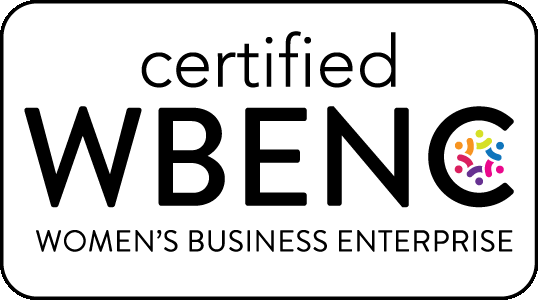As America’s “inflation era” rolls on, nearly half of Americans (47%) say money is negatively affecting their mental health – causing anxiety, stress, loss of sleep, or depression – according to Bankrate’s latest Money and Mental Health Survey. That, coupled with a PwC study indicating employees worried about finances are twice as likely to seek new jobs, is spurring employers to focus on financial well-being benefits.
And, because most are more worried about their finances in the here and now than in the future, those offerings must extend beyond traditional retirement planning. Here are ten emerging trends in financial well-being benefits that resonate with today’s workforce and tips for communicating about them:
1. Student loan repayment assistance
All-time high student loan debt is a major burden for many employees, and offering assistance can alleviate stress and improve retention rates. Options include repayment assistance, matching contributions or direct payments to loan servicers, or partnerships with third-party platforms to facilitate refinancing and management. Emphasize the company’s commitment to supporting employees’ educational journeys beyond hiring, promoting a long-term investment in their financial stability.
2. Earned wage access
This innovative benefit allows employees on-demand access to a portion of their earned wages before payday, helping them reduce reliance on high-cost payday loans and avoid overdraft fees. Help employees understand that, while it’s convenient and can temporarily foster a sense of financial security, this benefit should be used sparingly and responsibly to prevent dependency.
3. Emergency savings accounts
Some companies are setting up emergency savings accounts for employees, often through automatic payroll deductions or even matching contributions. These accounts can help employees build a financial cushion to weather unexpected financial setbacks without resorting to high-interest debt. Highlight the security and stability that emergency savings provide, framing it as an essential component of overall financial well-being, and emphasize how easy it is to participate.
4. Cryptocurrency offerings
Some forward-thinking companies are exploring options for employees to be paid part of their salary or invest part of their 401(k) in cryptocurrencies like Bitcoin for alternate payments and portfolio diversification. Be sure to educate employees about the risks and volatility of crypto investments, while highlighting its enhanced security and privacy.
5. Lifestyle spending accounts
These flexible accounts allow employees to be reimbursed for various wellness-related expenses, from gym memberships to financial planning services. Saving money on these expenses can contribute to an overall sense of well-being, including mental, physical, and financial. Educate employees on the benefits and proper use of these accounts, clearly outlining which expenses qualify and how to submit claims, and showing how they offer financial relief and peace of mind.
6. Caregiving support
As the workforce ages, many are juggling work with caregiving responsibilities, with associated stress that can feel crushing: The AARP and the National Alliance for Caregiving say 45% of caregivers feel financial strain on top of the time commitments. Subsidies for elder care or flexible spending accounts for caregiving expenses can help alleviate the cost, as can paid caregiving leave. Let managers and leaders know about these programs and enlist their support in destigmatizing caregiving and using caregiving benefits. Target messaging to the employees who are more likely to need these benefits and make sure they know what’s available.
7. Financial coaching and education
Personalized financial coaching or counseling sessions and workshops can help employees make informed decisions about budgeting, investing, and managing debt. Consider offering in-person and digital options to cater to different preferences, as well as a range of topics tailored by generation and income level. Highlight the accessibility and value of these programs and illustrate real-life impacts by using testimonials from employees who have benefited from them.
8. Financial well-being apps and tools
Partner with fintech companies to offer technology-based solutions like budgeting apps, investment platforms, debt consolidation/repayment calculators, and credit score monitoring tools to help employees navigate their finances and manage their debt easily and effectively.Showcase the accessibility and user-friendliness of these tools, promoting them as helpful, modern technology employees can use on their journey to financial well-being.
9. Health savings account (HSA) contributions
Rising healthcare costs can be a major financial concern, particularly for employees with high-deductible health plans. Employer contributions to health savings accounts can provide tax advantages and help offset healthcare costs. So can flexible spending accounts (FSAs) and access to telehealth services. Emphasize the triple tax advantage of HSAs in your messaging: 1) Contributions reduce taxable income; 2) Investment growth within the account is tax-free; and 3) Qualified withdrawals (for medical expenses) also are tax-free.
10. Fertility and family planning benefits
With many employees delaying parenthood, increasing numbers of companies are offering benefits that can help cover the costs of fertility treatments, adoption, or surrogacy. Provide clear, accessible information and highlight the positive impact of these benefits, ensuring information shared is inclusive and sensitive to everyone’s needs.
* * * * * * * * * * * * * * *
By expanding financial well-being benefits beyond retirement savings, employers can attract and retain top talent, build a more engaged and productive workforce, and demonstrate their commitment to employee well-being. Understanding emerging trends and adopting a strategic communication approach can help empower employees to take control of their financial future, lower their stress, and feel more satisfied at work.
Need help communicating about your company’s financial well-being offerings? The O’Keefe Group can help. Get in touch!


